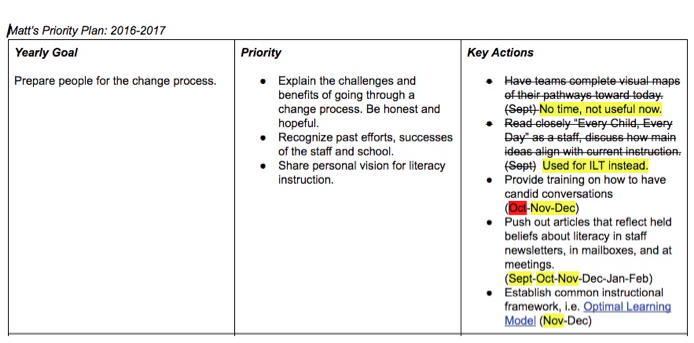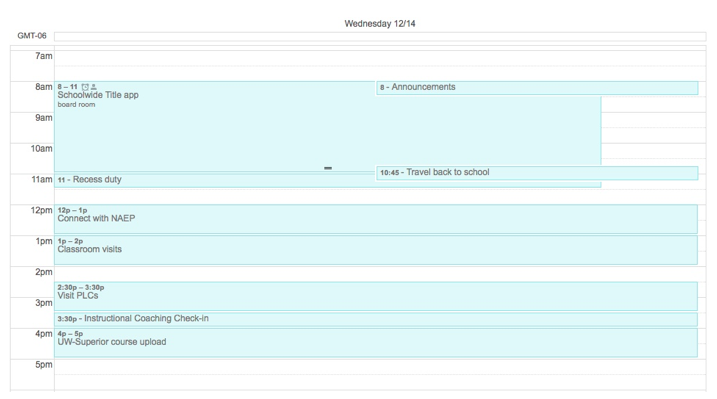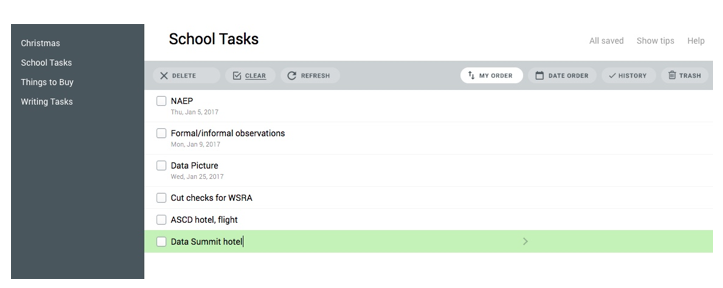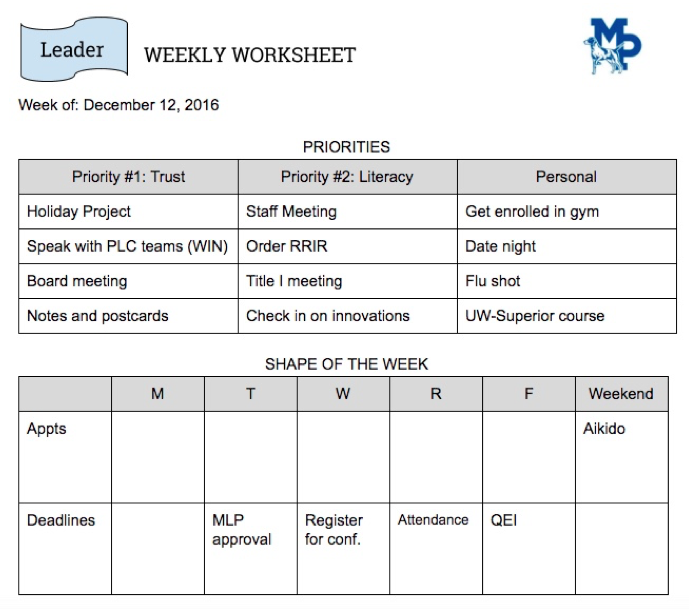“The Together Leader” Gets a Real Road Test
The Together Leader: Get Organized for Your Success – and Sanity!
By Maia Heyck-Merlin
(Wiley/Jossey-Bass, 2016 – Learn more)

My organizational system used to consist of the following:
– An open calendar
– Getting to inbox zero
– My to-do list in the form of sticky notes
– An open door policy
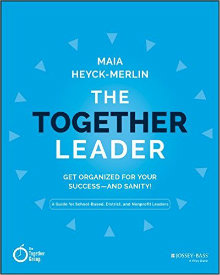
Now in a new school, I can hit reset on some past habits that have plagued me. My professional goal this year is to better organize my day so that I am more visible and effective as a school leader, for both students and teachers. Receiving The Together Leader: Get Organized for Your Success – and Sanity! by Maia Heyck-Merlin during my transition could not have happened at a better time.
Heyck-Merlin’s resource is a step-by-step guide for leaders of educational and nonprofit organizations. The book is over 400 pages long. Despite its girth, there are no words wasted. The author limits her writing to what is necessary to improve performance.
Here are my main takeaways from The Together Leader that have proven to be the most impactful in my new position.
-
Priority Plan
This has been the centerpiece of my improved organizational habits. It helps me ensure that professional goals are met on behalf of the school’s mission. A priority plan is “a three-month extraction from your Yearly Goals that names what matters most for you and your team” (p. 65). In developing a priority plan, the leader sets dates in which actions will be addressed. Below is a screenshot of the first part of my current priority plan.
One of the points that Heyck-Merlin makes throughout the text is that the technology for creating these organizational tools should be dependent on the leader. While she is fine with paper, several digital applications are highlighted in the resource. I have decided to go “all in” with Google to house my Together Leader documents. The template pictured is a Google Doc of my priority plan that I update once a month, three months out.
To be honest, I don’t meet every priority on a regular basis. For example, 10,000 steps has been a fleeting objective as part of my personal priority to live a more healthy lifestyle. What the priority plan does for me is keep these priorities at the forefront and not let myself forget about them.
The priority plan also helps me filter out what should not be a task I should be tackling. Keeping these goals in mind has helped me “delegate, delay or defer” (p. 83) any requests that are not mine to address.
2. Comprehensive Calendar
The author advocates for a comprehensive calendar, which is a “long-term, macro view of your calendar that reflects your priorities” (p. 131). This calendar should have limited to no white space. Otherwise it invites others to fill up these times. In the past, I would put items on my calendar that only involved others, such as appointments and meetings. With Heyck-Merlin’s guidance, I now populate my calendar with everything I expect to accomplish for the day and the week. My assistant has rights to my calendar if someone else wants to make an appointment with me.
I use Google Calendar for my comprehensive calendar. It is accessible from any digital device. Heyck-Merlin encourages leaders to account for everything that is an expected part of their day. This includes any regular duties, newsletters, larger projects, and even travel time between meetings. My priorities are the first items that go into my comprehensive calendar. Because I am at a new school, I have a main goal of building trust and relationships. This means I schedule my morning announcements, lunch and recess rounds, and after-school availability. I also plan for one hour a day in classrooms for instructional walks.
-
-
-
The “Later” List
-
-
The later list is what cannot be (or shouldn’t be) taken care of right now. The author advocates for a later list because we are in control of what is on it. Since I use Google almost exclusively for being more productive at school, I started using Google Tasks for this part of my system.
A later list can be an antidote to email. Instead of other people dictating what needs to get done, a later list allows a leader to assign what gets done and when. My email is now checked less frequently. I will go to this list to help drive my daily schedule.
-
-
-
Weekly Worksheet
-
-
When I moved from teaching to administration a decade ago, I thought my days of lesson planning were over. Not so for the Together Leader. A weekly worksheet is a combination of the later list and the priority plan. A leader reviews their priorities, considers the more immediate tasks, and prepares for what the next week holds in writing.
In her book, Heyck-Merlin shares several examples of what a weekly worksheet could be. She also highlights other leaders’ templates on her website, The Together Group. Looking at several examples, I created my own using Google Docs. It incorporates many of the ideas suggested or shared. Beyond what you see pictured here, I also included a second page with space for daily reflection and a weekly checklist.
Too Good to Be True?
With any type of significant change, there is resistance. For me, I was suspicious about the high level of diligence Heyck-Merlin expected as I structured my time to be more efficient and effective as a school leader. I am glad to say that I was proven wrong.
If there is any knock on The Together Leader, it might be that at 400 pages it can be an intimidating project for the timid leader. In fact, I am only halfway through reading this text. But from the results I have experienced so far, I already feel comfortable recommending it for other school leaders and look forward to exploring further myself.
Matt Renwick is a veteran elementary school principal and former classroom teacher. He served as an assistant principal and athletic director in a middle school for four years. Matt writes for ASCD and Lead Literacy and is a frequent blogger.

